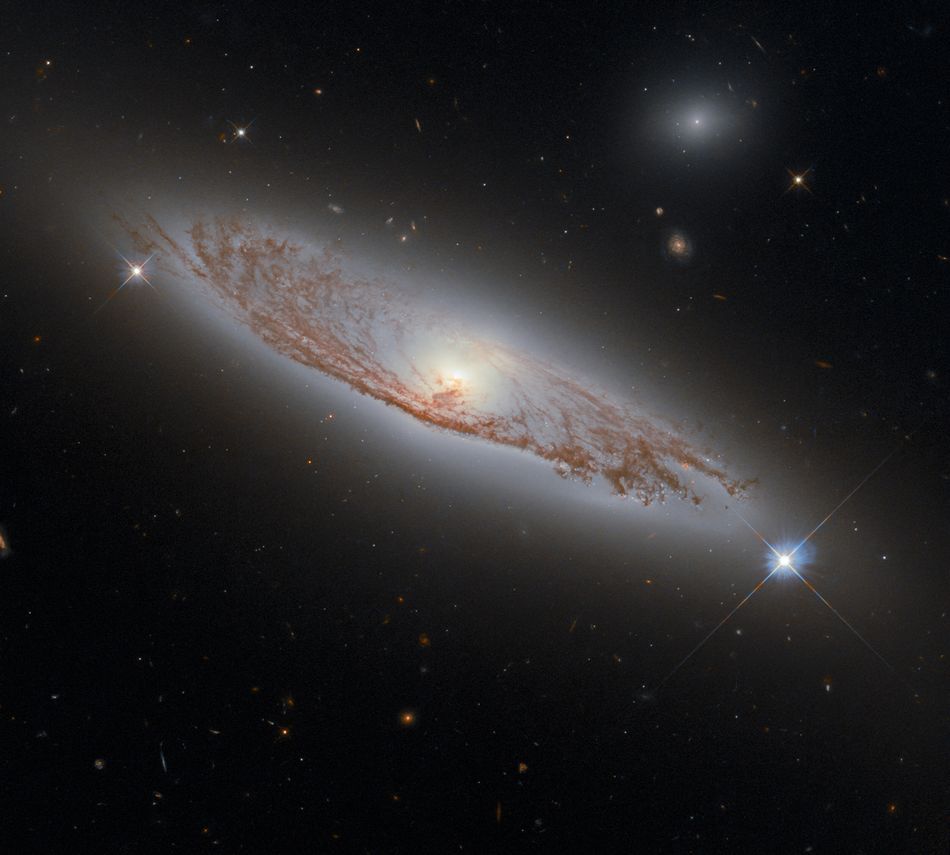Swirling around in the Virgo constellation, the Hubble Space Telescope captured a look at the spiral galaxy NGC 5037, NASA shared on Friday.
Located roughly 150 million light-years away from Earth, the galaxy was first documented by astronomer and musical composer William Herschel in 1785. This new, incredibly detailed image of the galaxy is a composite of images taken with Hubble’s Wide Field Camera 3.
The full image shows NGC 5037 encased in a wide, bold border of dark space.

The full image of NGC 5037 reveals a broader look at the galaxy’s surroundings, a largely black abyss with a smattering of distant lights.
Image: ESA/HUBBLE & NASA, D. ROSARIO, ACKNOWLEDGMENT: L. SHATZ
Amid a handful of popping lights, the tilt of the galaxy from Hubble’s perspective is evocative. It looks like it’s in repose, lounging out in the vastness of space, its gaseous arms spiraling out from its bright, star-packed center.
The abyssal border brings added weight to this image, making the galaxy in its upper half pop while conveying the vastness of the universe beneath it. Looking closely, the blackness is actually filled with dim hints of galaxies and star clusters, so far away that they barely register in Hubble’s exposure. Zooming in shows smatterings of other spiral galaxies behind NGC 5037.
Around the edges of the galaxy’s dark, feathery, dusty and gaseous arms are little blue and yellow dots, each one of them a star formed in the collisions of super-heated gases.
Spiral galaxies are the most commonly observed galaxies in our universe. Our own galaxy, the Milky Way, is a spiral as well, swirling at an imperceptibly fast 130 miles per second.
NGC 5037 is one of 7,840 galaxies cataloged in the New General Catalogue of Nebulae and Clusters of Stars, compiled in 1880.
